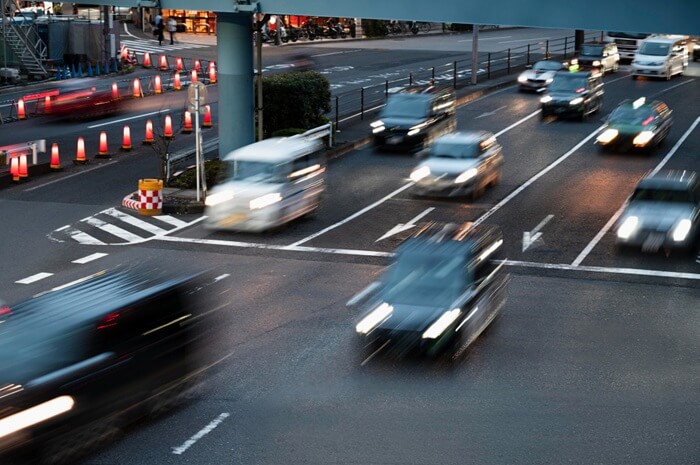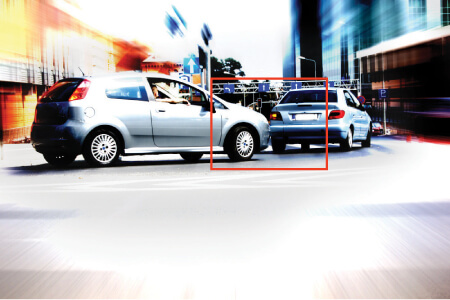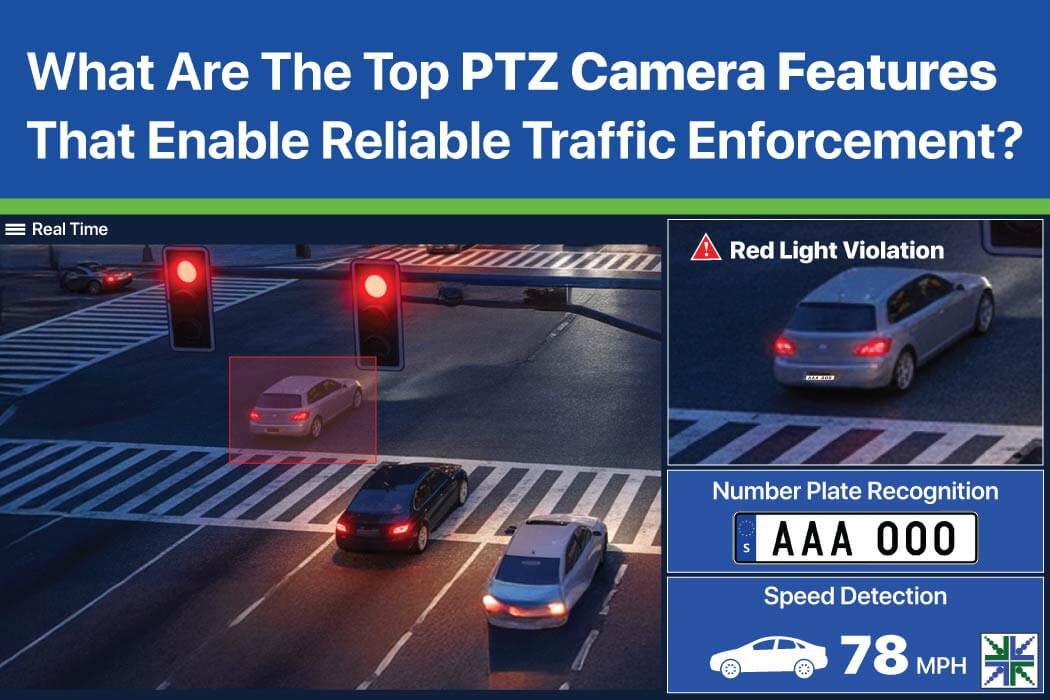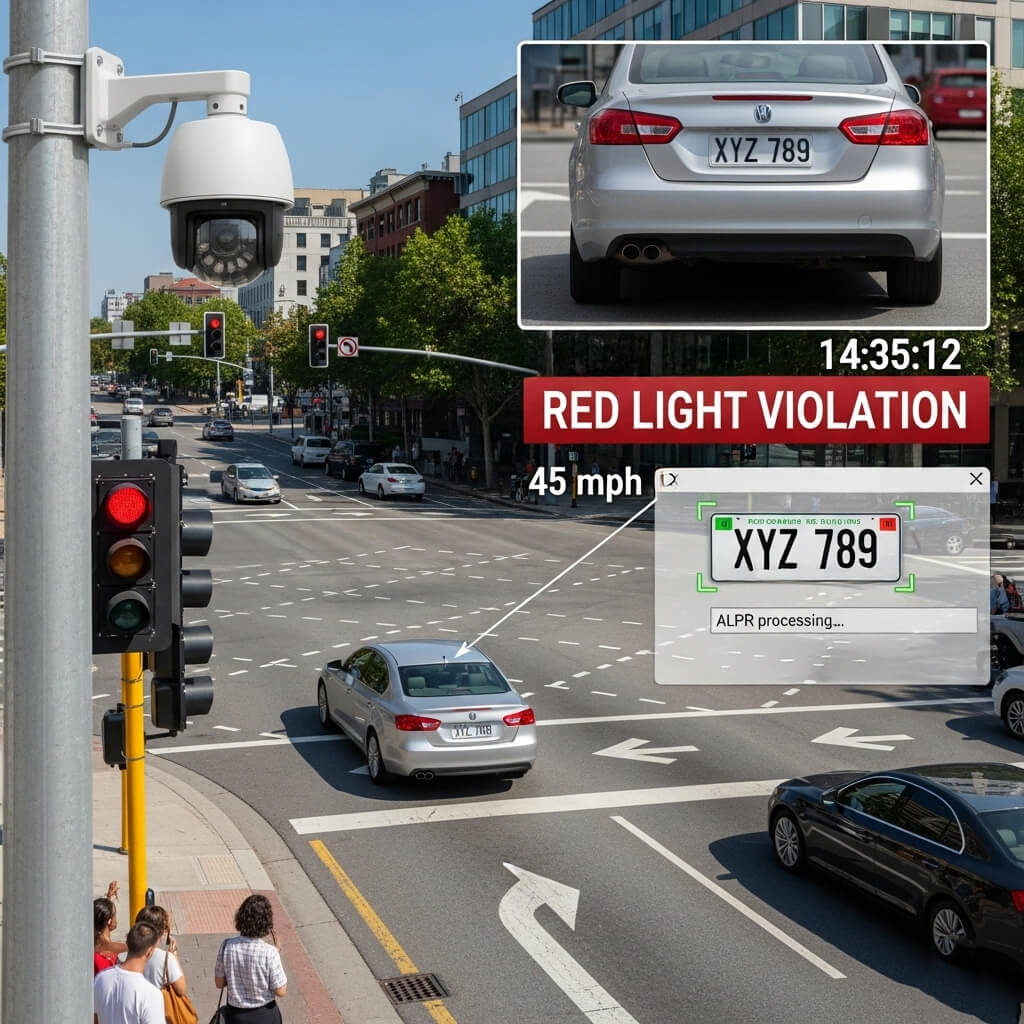What you will learn:
- PTZ cameras replace multiple fixed units by covering wide intersections and highways with pan, tilt, and zoom flexibility
- Event-driven auto-tracking ensures continuous monitoring of speeding or violating vehicles across their full range
- ALPR integration transforms PTZ footage into actionable enforcement records tied to license plates
- Remote operator control enables instant situational awareness during accidents, protests, or emergency events
These days, traffic systems are under more pressure than ever before. After all, roads are denser, intersections are risk zones, and enforcement needs to operate in real time. Static cameras serve a narrow purpose.
When visibility, control, and rapid decision-making matter, Pan-Tilt-Zoom (PTZ) cameras bring more to the table. These cameras combine mechanical range with intelligent vision, building a system that adapts with every frame.
In this blog, you’ll learn about PTZ cameras, their popular use cases, and the features that make them highly popular for traffic enforcement.
What Are PTZ Cameras?
PTZ cameras use mechanical movement to pan horizontally, tilt vertically, and zoom optically. Unlike fixed-view systems, PTZ cameras track, follow, and focus on events as they happen. In traffic applications, such flexibility matters. A single PTZ unit can monitor multiple lanes, sweep across intersections, and zoom in for plate recognition or incident validation.
A single PTZ unit can replace multiple fixed cameras in large intersections or highway stretches, improving coverage efficiency while cutting infrastructure costs. Instead of deploying several static units for each approach and exit lane, one PTZ dynamically shifts focus as situations unfold, maximizing surveillance reach with fewer devices.
Modern PTZ cameras support dynamic vision workloads. They integrate onboard computing and machine learning models. These models run locally, enabling detection, tracking, and classification at the edge. No server round-trips. No bandwidth congestion.
These systems are built for deployment in unpredictable environments such as harsh sunlight, night glare, vibration, and the constant flow of high-speed vehicles.
Traffic Enforcement Use Cases of PTZ Cameras
Red light violation detection
At high-risk intersections, timing is everything. PTZ cameras track vehicles across stop lines in coordination with signal phases. Their ability to zoom ensures plate-level clarity, while edge processing captures the time-stamp, direction, and vehicle behavior. The data becomes actionable for both enforcement and post-incident analysis.
When integrated with ALPR engines, this data acts as actionable records tied to license plates, streamlining ticketing and violation processing. This is a standard approach in ITS deployments, since it merges mechanical coverage with automated identification in one workflow.
Speed and lane discipline monitoring
Speed detection depends on frame analysis and object tracking. PTZ cameras use video analytics or radar to estimate vehicle speed, calculating velocity from time and distance through multi-frame tracking. With wide pan coverage and deep zoom range, a single unit can track multiple lanes. It enables enforcement agencies to monitor illegal overtakes, hard lane cuts, and dangerous merging across wide road spans.

Event-driven auto-tracking ensures that once a violation is detected, the PTZ automatically locks onto and follows the vehicle across its range. It reduces gaps in evidence so that operators maintain a continuous record from the point of violation until the vehicle exits the monitored area.
Near-miss detection at intersections
Incidents without collision still carry data. PTZ systems detect proximity violations—vehicles cutting too close during turns, sudden stops, or late merges. By analyzing trajectory and acceleration patterns, the system flags behavior that could escalate. These insights support road planning and risk mitigation, where data from minor incidents is often missing.

Real-time traffic surveillance
PTZ cameras track congestion patterns, vehicle density, and abnormal stoppage. Their mechanical range allows a single camera to scan entry points, exits, and mid-blocks. Combined with analytics models, they support automatic alerts for stalled vehicles, wrong-way entry, and intersection flooding. Local processing means these alerts trigger in milliseconds.
Also, since control centers still rely heavily on remote operator control, PTZ cameras help provide situational awareness during high-impact events. Whether an accident, a protest, or an emergency evacuation, operators can instantly zoom into hotspots, override automation, and direct attention to areas that AI models may miss.
Key Imaging Features of PTZ Cameras for Traffic Enforcement
Edge AI processing
Modern PTZ units integrate NPUs (Neural Processing Units) to run AI inference locally. Detection, tracking, classification, and event tagging happen locally. It reduces latency, secures data integrity, and keeps the system responsive in bandwidth-constrained deployments. Decision loops close on-site, without waiting for cloud compute cycles.
Low-light clarity
Traffic enforcement rarely pauses. Low-light environments like fog, night drives, and tunnel exits demand visibility without compromise. PTZ cameras built with Sony STARVIS sensors maintain clarity through flexible gain control and high sensitivity. Details like license plates, lane markings, and vehicle outlines stay visible under streetlights, glare, or headlights.
Dynamic PTZ control
Mechanical range defines the PTZ advantage. With horizontal pan, vertical tilt, and optical zoom, these cameras adjust their view in real time. This dynamic coverage supports multi-lane surveillance, object tracking across frames, and zoom-in for incident confirmation. Operators gain wide-angle monitoring with precision-level focus control.
Local storage
SD card slots inside the unit retain video footage and analytics logs. Even in loss-of-network scenarios, data is stored, indexed, and ready for upload or extraction. It is critical for enforcement workflows where evidentiary footage must remain intact, time-stamped, and retrievable.
RTSP and ONVIF support
Traffic systems depend on compatibility. PTZ cameras stream using RTSP protocols and integrate with existing video management platforms through ONVIF standards. It removes integration friction. Cities and agencies retain software control while upgrading visual intelligence with new PTZ units.
Outdoor-ready
PTZ units operate in harsh environments without external shielding. Enclosures rated IP66 or IK10 handle water jets, dust, and impacts from debris or vandalism. Internal components are mounted to withstand vibration from mounting poles or wind shear. These cameras run 24/7, across heat waves, monsoons, and freezing nights.
Low power and solar compatibility
Remote roadways and border checkpoints often lack grid access. PTZ cameras built for solar deployments consume minimal power while maintaining uptime. Smart scheduling, adaptive frame rates, and deep-sleep modes keep the system active through night cycles and cloudy conditions. With solar compatibility, enforcement expands without trenching or cabling.
e-con Systems Offers Cutting-Edge PTZ Cameras
Since 2003, e-con Systems has been designing, developing, and manufacturing OEM cameras.
Our smart PTZ camera series is built for high-speed roads and busy intersections, thereby helping unlock real-time traffic enforcement.
These edge-ready cameras combine Sony STARVIS imaging with onboard NPUs to process analytics where it matters: on the ground and in the moment. They come with features like full pan-tilt-zoom control, all-weather reliability, zero server reliance, and ALPR ANPR integration with Edge AI models.
Use our Camera Selector to check out our full portfolio.
Learn more about our smart traffic cameras
Need help finding and deploying the best-fit PTZ camera for your traffic enforcement system? Get in touch with us by writing to camerasolutions@e-consystems.com.

Dilip Kumar is a computer vision solutions architect having more than 8 years of experience in camera solutions development & edge computing. He has spearheaded research & development of computer vision & AI products for the currently nascent edge AI industry. He has been at the forefront of building multiple vision based products using embedded SoCs for industrial use cases such as Autonomous Mobile Robots, AI based video analytics systems, Drone based inspection & surveillance systems.





